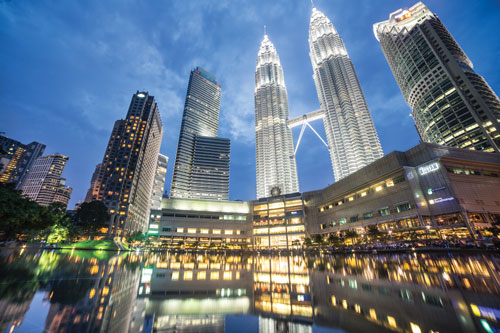Hospitality players and tour operators in Kuala Lumpur are priming the city with a renewed sheen of luxury, keeping pace with efforts by the tourism bureau to court visitors from the high-end segment.

Kuala Lumpur Tourism Bureau (KLTB), set up in November 2015, aims to make the city an attractive luxury travel destination as the city’s supporting infrastructure takes shape.
The bureau, which oversees the implementation of the Kuala Lumpur Tourism Masterplan 2015-2025 among other objectives, has rolled out strategies to attract more high-yield tourists.
Since the beginning of this year, KLTB has been conducting hospitality seminars for taxi drivers and has groomed 80 tourism ambassadors in the city.
Noraza Yusof, general manager at KLTB, said: “In the second half of the year, we will publish a luxury tourism product directory and introduce luxury packages.
“We also wish to attract the rich by positioning the city as the gastronomic hub of Asia. One of the initiatives is weekly cooking classes for international tourists and spouses of MICE delegates.”
KLTB is also promoting sky dining experience which feature restaurants such as Atmosphere 360, Marini’s on 57, Nobu and Heli Lounge Bar, all of which are located in the city centre.
Manfred Kurz, managing director, Diethelm Travel Malaysia, said: “Sky dining options cost relatively more but Western tourists are willing to pay for the unique dining experience and great bird’s-eye views of the city.”
Luxury Tours Malaysia saw Asian luxury FIT bookings doubling this year from the monthly average of three to four requests in 2014, an improvement that senior manager Arokia Das attributes in part to Tourism Malaysia’s overseas promotional efforts.
He added: “It becomes easier to attract high-end tourists when you have supporting infrastructure also in place, such as high-end restaurants with scenic views, chartered helicopter rides to see the city skyline and high-end accommodation.”
St Regis Kuala Lumpur, which soft-opened in May this year, stands out for having the largest standard guestrooms in the city at 63m² and a grand ballroom with a 270-degree LED digital canvas skirting the venue.
With more international luxury brands the likes of W and Four Seasons debuting in the city over the next few years, existing hotels are finding the impetus to revamp amid growing competition.
For instance, the 19-year-old Ritz-Carlton Hotel, Kuala Lumpur, recently underwent its first major renovation to “keep up with the times and to make the property memorable to guests”, the hotel’s director of sales and marketing Yannick Mauchle told TTG Asia.
Commenting on the city’s transformation, Ally Bhoonee, executive director of World Avenues, said: “In the past, Kuala Lumpur was not perceived as an upmarket destination as it had limited products. It was also difficult to market the destination to high-end tourists from the Middle East who would rather go to Europe.
“But with these new brands coming into the marketplace, it will improve the image of the city and make it easier to promote the city as an upmarket destination,” he added.
Tourism players are also strategically packaging complementary products in the state of Selangor – which surrounds the Malaysian capital geographically – to further enhance Kuala Lumpur’s luxury appeal.
Arokia said: “Luxury tourists are not content staying in high-end accommodation and being surrounded by tall buildings – they want to have local experiences as well.
“Thus we take them on chauffeur-driven vehicles to visit the Mah Meri aborigines on Carey Island, an hour’s drive from the city.”
Another attraction that fits the bill, he said, is the Royal Selangor Visitor Centre, where tourists can view pewter craft or create their own souvenirs.
Diethelm’s Kurz added: “High-end Europeans to Malaysia love nature. Yet, they would rather not spend a whole day jungle trekking in a real forest.”
He pointed out that the sweet spot lies in arranging day trips to the Forest Reserve Institute Malaysia, where clients can go on treks and canopy walks, before returning to the city’s comforts in the evening.
This article was first published in TTG Asia, June 3, 2016 issue, on page 28. To read more, please view our digital edition or click here to subscribe




















